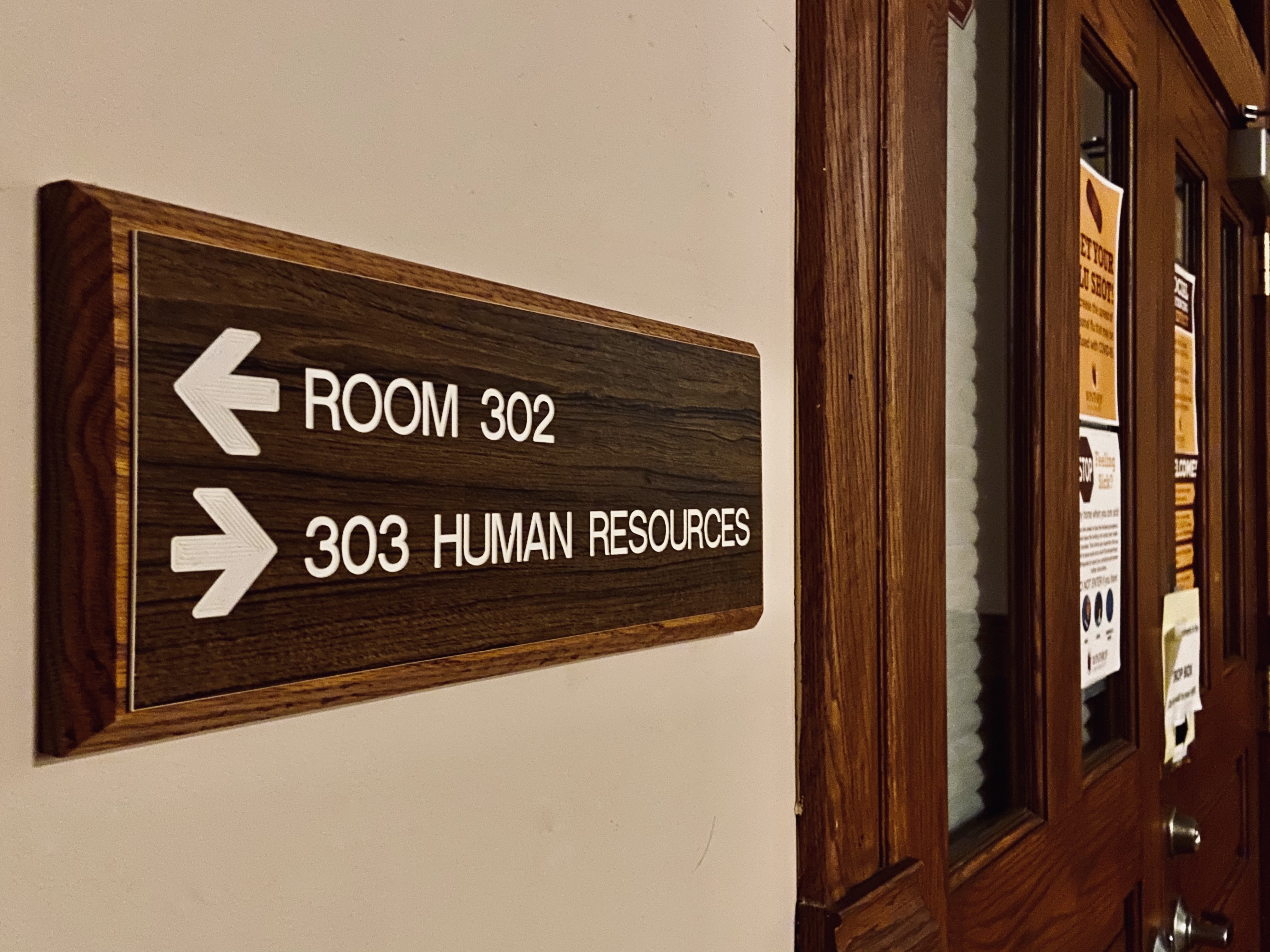Qualifying university faculty have the option to participate in a voluntary separation and first heard about this option from Winthrop’s Department of Human Resources on Feb. 24. Qualifying faculty were informed that the deadline to apply is April 10.
Opting for voluntary separation means that one would retire and not return to the university next academic year and would receive a specific amount of paid leave according to how long they have worked at the university.
In order to qualify for voluntary separation, one must be a tenured faculty member who has worked at the university for ten or more years. Qualifying faculty would receive a week’s worth of pay per year that they have served at the university. For example, someone who has worked at the university for ten years would receive ten weeks worth of pay.
“The faculty who were offered voluntary separation are not eligible for annual leave, so there is no pay out upon separation. They do accrue sick leave, but according to state law, sick leave balances upon separation are not paid out to any employee,” said Lisa Cowart, vice president for human resources, employee diversity and wellness.
Offering voluntary separation for qualifying faculty members is another stride the university is making towards returning to a sustainable budget.
“The university continues to realize savings from the furlough plan that began in September 2020 and runs through the end of June 2021. The plan is on schedule to generate the $3 million that we targeted,” said President Hynd in an email sent to faculty and staff on Feb. 26. “We also expect additional savings next budget year as we trim our workforce through a voluntary separation plan that was recently approved by the state in which eligible faculty members are currently weighing their participation. These cost-saving measures will hopefully help us avoid additional furloughs and/or a Reduction in Force (RIF) in the 2021-22 budget year.”
University officials are eager to get Winthrop back to its pre-pandemic budget.
“Getting this institution on solid ground financially post-pandemic will not be easy or quick, but in the long term, it will help us save jobs, fund future compensation initiatives, and keep our university the unique and wonderful place that we know it to be,” Hynd said.
Along with the option for voluntary separation comes concerns regarding the overall quality of Winthrop’s faculty, the intentions of the university towards its most experienced faculty members and the amount of work to faculty member ratio should a significant number of faculty participate in the buyout.
“This is a concern that some have expressed,” said Dr. Guy Reel, chair of the Department of Mass Communication. “I certainly think the loss of that expertise could affect the quality of teaching in some cases. On the other hand, some might argue that new perspectives can bring a different kind of learning into the classrooms.”
There are a number of impressive faculty members who have had a positive impact on the university and its students, and it would be a major loss to the university and its students if such faculty members were to opt for voluntary separation, however, offering voluntary separation brings the university closer to a budget that would allow for it to lift its hiring freeze.
It is not expected that the option for voluntary separation alone will enable Winthrop to lift its hiring freeze, however, it does serve as a positive strategy for improving Winthrop’s financial standing a bit. Making such strides towards a healthier budget can lead to an elimination of the hiring freeze in the near future, which will bring about opportunity for the hiring of new faculty members with new insights and teaching strategies that could benefit the institution.
There is concern that the presence of a buyout could be indicative of a lack of appreciation towards longtime faculty at the university.
“I’ve heard about some of my colleagues feeling deeply and personally wounded by these voluntary separation offers,” said an anonymous tenured faculty member. “I personally find them offensive and tone deaf, in a time when administration should be doing everything they can to express gratitude and support for their hardworking faculty who have willingly put themselves in harm’s way to continue to serve the students we love… I find any move to single out faculty in these ways frustrating, when what we need is rallying and moral support.”
The initial communication of the buyout came from the Department of Human Resources and not Hynd, which left some qualifying faculty feeling underappreciated for their years of service to the university.
“Many faculty members felt like the first communication about this should have come from the president rather than from HR, and that more context should have been provided for faculty members so that they didn’t feel like they were being asked to leave or that their contributions to the institution were not valued. It seemed like an example of miscommunication,” said an anonymous tenured faculty member.
Hynd addressed this concern at the virtual faculty and staff town hall meeting on March 2.
“The voluntary separation program [was] not introduced through an announcement by the president. The reason is that there were only 118 faculty on campus that qualified for this program. So, it just seemed more appropriate to contact them directly. This is an individual decision for everybody who was contacted and qualified for this voluntary separation program. That’s the simple reason,” said Hynd. “We just thought it was more appropriate to contact the individuals by themselves because they need to think about this and if they’re interested, of course, they are to follow up with HR.”
In other words, being that relatively few faculty members qualify for voluntary separation, university officials thought it more appropriate and efficient that qualifying faculty be contacted independently, and the president reiterated that their method of communication was not indicative of a lack of appreciation for the dedicated longtime faculty members who qualify.
“We’re not encouraging people to take this as a message that they should be thinking about leaving. This is simply an option, should people be considering it for other reasons. Some people may want to retire, and some people may want to take a position at another university, or they may have other opportunities available. So, it is just simply an option we’re providing. It is not a message to targeted faculty, so I want to make sure that’s clear,” Hynd said.
On top of frustrations regarding how the buyout was announced are concerns regarding a potential discrepancy between workload and the amount of faculty working at the university as well as the possibility of similar financial circumstances next year.
“There’s not a link between the voluntary separation program and a reduction in force,” said Hynd. “Those are just different approaches to try and control our budget. There is currently no conversation among the leadership about doing reduction in force. This fiscal year, we’re working hard to make sure that that doesn’t happen and there’s no conversation at this moment about it happening next year either. So, we’re working as hard as we can not to get to that landscape.”
University officials are hoping for a smoother fiscal year next year where they will not have to resort to hiring freezes, furloughs or voluntary separations, however, university officials are still seeking out ways to recover from pandemic-related hits to the budget.
“We’re having a voluntary separation program for the faculty and that’s the beginning stages. We look at other opportunities, or maybe other programs to maybe offer down the road, but right now, we started with a voluntary separation for faculty that qualified… and that’s a start that will save us money for next year,” said CFO, Justin Oates, at the March 2 virtual meeting. “Again, we have to balance continuing to support those courses and programs… each VP is looking at their areas and determining which vacant positions we might be able to eliminate, vacancies that have been used to balance the budget.”
Because applications for voluntary separation are not due until April 10, the university is unable to gage exactly how much money the voluntary separation program will save. Some faculty doubt that many will opt for voluntary separation, so it is possible the university will save very little money from the program.
“I actually haven’t heard of anyone considering it, but that doesn’t mean they haven’t,” said Reel. “Realistically you’re probably talking about only a few who [qualify], and who are close to retirement age anyway, who could take advantage of this and I haven’t actually heard anyone express thoughts about the fairness or generousness of it… One reason is that given current conditions, we don’t actually see many faculty members in person these days.”
On March 5, Gov. Henry McMaster issued an executive order for “remaining state employees [to return] back to the workplace on a full-time basis.”
Although many faculty members are distraught by McMaster’s order, the announcement does not sway qualifying faculty to partake in the buyout even if they are not ready to return to work.
“I wasn’t offered this voluntary separation, but I wouldn’t have been interested, and as dangerous, irresponsible, and poorly planned as McMaster’s plans are, they wouldn’t have swayed me either way,” said an anonymous faculty member.
“The governor’s decision is premature,” said another anonymous faculty member. “I haven’t even gotten my first vaccine yet. However, I will not leave the university to avoid having to return to campus.”
Winthrop University officials have implemented multiple money-saving programs in an effort to benefit the budget which took a significant hit from the pandemic. Offering voluntary separation for qualified faculty was just another strategy to steady the budget, however, it is unlikely many faculty will participate, so it may be necessary for the university to implement similar strategies in the future.
Photo by Emma Crouch




